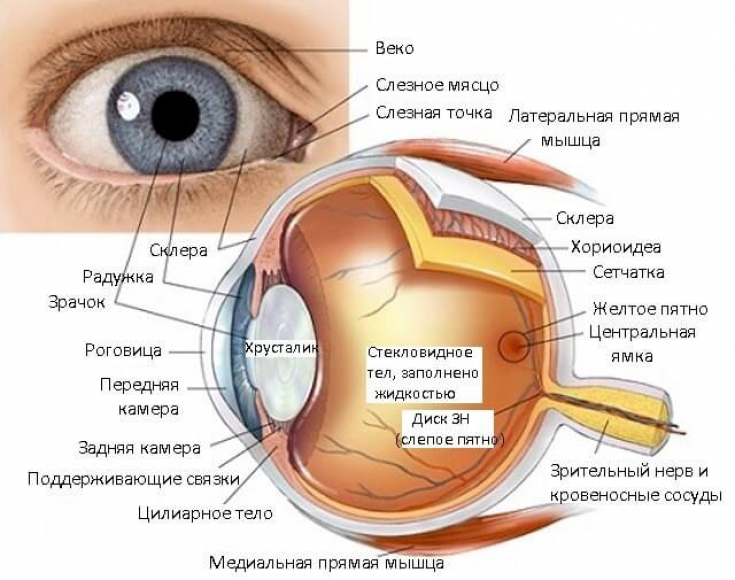Rosacea – chronic inflammatory skin disease.
It is incurable, but rosacea symptoms can be effectively controlled with various aesthetic procedures.
Thus, skin redness and visible blood vessels can be reduced with the help of medical preparations for skin care, chemical peels, laser therapy.
In 58–72% of patients, rosacea also affects the eye area.
How does ophthalmorosacea manifest itself, what eye diseases it can cause and what treatments are used to solve this problem, in the article estet-portal.com says ophthalmologist Jennifer Doyle.
- Ophthalmorosacea: what is it, the main symptoms of the disease
- Blepharitis, conjunctivitis and keratitis in ophthalmic rosaceaa
Ophthalmic rosacea: what is it, the main symptoms of the disease
Ophthalmic rosacea – a distinct subtype of dermatosis that affects the periorbital region and can cause complications that threaten vision loss.
Timely diagnosis and treatment of the disease can avoid dangerous complications.
Because it is cosmetologists who are often the first to consult patients with rosacea, they must be able to identify eye area lesions in time and refer the patient to a specialized specialist.
Read also: Proper cosmetic management of patients with rosacea
Ophthalmic rosacea causes inflammation of the eyelids and the surface of the eye.
Elevated levels of pro-inflammatory cytokines such as interleukins 1-alpha and -beta and metalloproteinases-8 and -9 have been found in the tears of patients with this subtype of rosacea.
Often, patients with ophthalmic rosacea also present with other subtypes of dermatosis.
Patients with ophthalmic rosacea may complain of the following eye symptoms:
- irritation;
- foreign body sensation;
- burning;
- sensitivity to light;
- lacrimation;
- blurred vision.
Symptoms may vary in severity.
Blepharitis, conjunctivitis and keratitis in ophthalmic rosacea
Ophthalmic rosacea can spread to the eyelids and the surface of the eye, as well as provoke the development of blepharitis and conjunctivitis, and in severe cases – corneal lesion.
or blepharitis manifests itself:
reddening of this area;- thickening of the skin;
- telangiectatic changes.
- Rosacea is often accompanied by
, where the inflammation is localized in the meibomian glands at the posterior border of the eyelid, while anterior blepharitis is characterized by the accumulation of dirt and bacteria along the base of the eyelashes. Swelling caused by inflammation or blockage of the meibomian glands is also known as
chalazion. After disruption of meibum production, tears evaporate faster, leading to dryness, irritation and even inflammation, redness and damage to the surface of the eye.
Complex treatment of rosacea: when the skin asks for help To
treat meibomitis in ophthalmic rosacea, conservative therapy is used:
warm compresses (contribute to the thinning of secretions in the glands);- massage of the affected eyelid (ensures the release of secretions from the glands).
– inflammation of the thin transparent membrane that covers the inner surface of the eyelids and the sclera of the eye (conjunctiva) can develop as a result of inflammation of the eyelids and a decrease in the quality of the tear film. Redness and tenderness of the whites of the eyes, which are symptoms of conjunctivitis, can become
chronicin patients with rosacea.

Fig. 1: anatomy of the eye
Therapeutic uses for conjunctivitis:
moisturizing drops to protect the surface of the eyes;- steroid-based eye drops for the temporary control of inflammation.
- In severe cases, ophthalmic rosacea can lead to damage to the cornea, which occurs in about a third of patients at some stage of the disease.
When
inflammation of the cornea(keratitis) reduces visibility.
Follow us onFacebook! As a rule, the upper layer of the cornea (epithelium) is first involved in the pathological process, with time a point
superficial keratitis. Breach of the barrier can lead to damage to the deeper layers of the cornea with ulceration and vascularization.
Severe ophthalmic rosacea can lead to loss of vision. Approximately one third of patients with ophthalmic rosacea are at risk of developing potentially vision-threatening conditions.
In such cases, along with topical and conservative therapy, oral therapy is recommended.
Tetracyclines such as
doxycyclinehave not only antibacterial but also immunomodulatory effects by reducing the expression of pro-inflammatory metalloproteinases.
Treatment: 100 mg doxycycline is given orally once a day for three months.
Personalized complex algorithm for working with rosacea It is important to remember that rosacea – a disease that causes not only psychological discomfort.
Ophthalmic rosacea in severe cases can lead to
vision loss. Approximately one third of patients with ophthalmic rosacea are at risk of developing potentially vision-threatening conditions. Therefore, the cosmetologist, having detected symptoms of damage to the periorbital region and the eye itself, must refer the patient to an
ophthalmologist. According to
magazine.







Add a comment